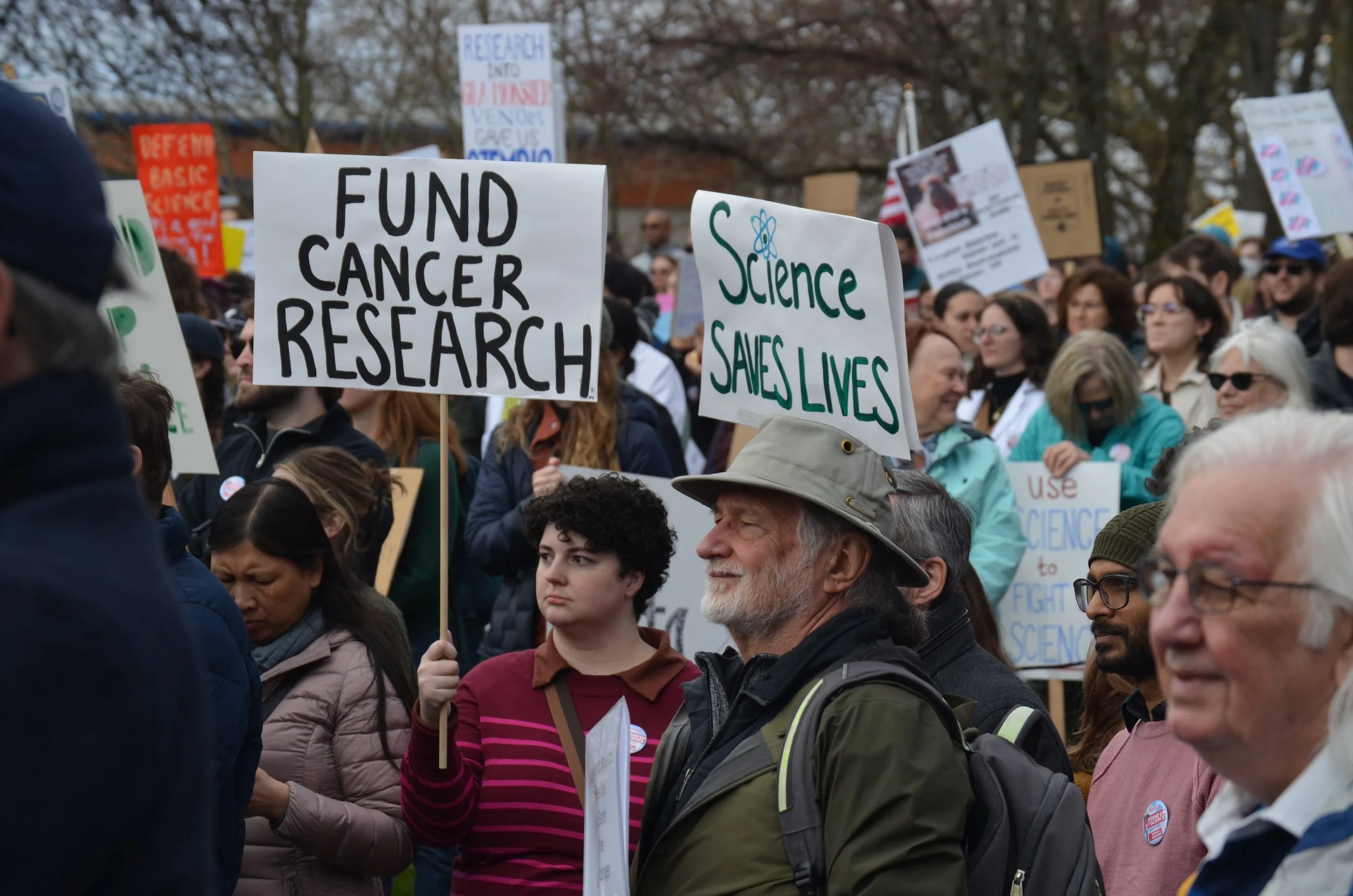WHAT’S AT STAKE
By cutting funds to lifesaving research and medical care, the Trump administration is abandoning families who are suffering and costing taxpayers billions of dollars. These reckless cuts are dangerous to our health, and dangerous to our economy.
Cuts to NIH funding will mean cuts to ongoing clinical trials, lifesaving treatments, jobs, and local economies – for working families in every state.
What has NIH funding accomplished?
NIH funding makes lifesaving research possible, and has improved treatments for working people in every area of the country who are affected by cancer, Alzheimer’s, heart disease, diabetes, HIV, and much more. NIH funding supports training opportunities that develop the next generation of scientists, and attracts the best researchers from around the world to work in the US. Over the years, research funded by the NIH has made the US a global leader in lifesaving medical breakthroughs, and has fueled economic activity across every state:
Cancer is the leading cause of death for those under 65 years of age. Thanks to NIH funding and improvements in treatment, childhood cancer death rates have decreased by 70% over the past 5 decades.
An estimated 3.8 million lives in the U.S. have been saved since 1991 thanks to advances in early detection and treatment of cancer.
Of the 356 new medications approved by the FDA between 2010-2019, 354 were supported by NIH funding.
NIH funding supports lifesaving research and local economies in every state.
Every dollar invested into NIH research equates to $2.46 in economic activity.
In 2023, NIH funding supported over 400,000 jobs in the U.S. and created nearly $100 billion in economic activity.
Who’s at risk if public research funding is cut?
Millions of families who look to NIH and federally-supported research to produce lifesaving treatments for ailments like cancer, Alzheimer’s, diabetes, and more.
Millions of students who attend higher education institutions where they train to become nurses, teachers, doctors, engineers, and otherwise advance the public good.
Four million people working in higher education, whose jobs are on the line.
Communities that depend on higher education and research as their economic engines.

